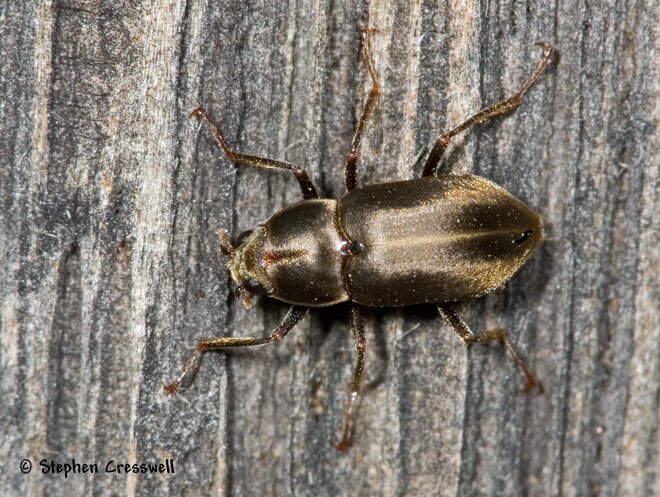
Family: Dryopidae
Subfamily: none defined in Dryopidae
Length: 5-6 mm
Adults in the Long-Toed Water Beetle family are aquatic (sometimes partially so) but oddly enough, they aren't able to swim. Instead, they cling to water vegetation and pull themselves about on it, or spend their lives under rocks or other objects in the water.
Beetles in this family are hairy, and their hairs trap air that then diffuses into their bodies. This amount of oxygen "is enough for their unhurried life," says Richard E. White (1983).
Beetles in the genus Helichus are among the most-noticed Long-Toed Water Beetles found in West Virginia, in part because they sometimes fly to lights, as did the beetle pictured below with a little of its aquatic home clinging to the pronotum.
The story of the genus Helichus shows how it is possible for errors to creep into the literature and stay there, given the huge number of beetles and the tiny number of specialists. In 1883 a North American author misidentified a Water Penny Beetle larva in the genus Ectopria as the larva of a Long-Toed Water Beetle in the genus Helichus. The error in family ID was repeated by various authors in 1929, 1931, 1939, 1951, and 1953. Meanwhile, two other significant errors about Helichus larvae appeared in scholarly articles. Finally, in 1978, a publication by Doyen and Ulrich described and illustrated a North American Helichus larva correctly, after 95 years of errors. As it turns out, Helichus larvae are terrestrial, not aquatic as had been thought prior to 1978.
Note: This page is both the Helichus fastigatus page, and the family page for Dryopidae.

Insects of West Virginia